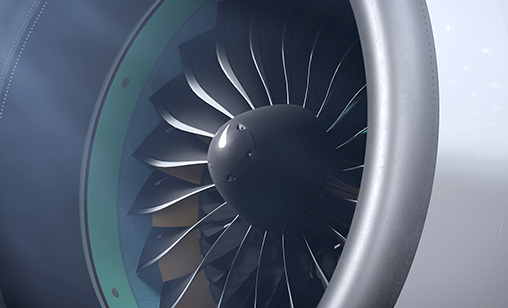Industry Insight Special Report
Engine MRO to garner 50% of maintenace sector’s global market
April 1st 2025
Global aircraft engine MRO market size, valued at $37.56 billion in 2022, is projected to increase from US$42.81 billion in 2023 to US$59.01 billion by 2030 - at an average annual rate of 4.69% - Fortune Business Insights has forecast. Read More »
The market will gain traction in the next six years from growth in air passenger traffic and an increasing pace of aircraft deliveries.
 |
The Asia-Pacific engine MRO market was valued at $12.36 billion in 2022. It is forecast to dominate the market as the decade closes recording the highest annual growth worldwide, Fortune Business said.
The region’s commercial airline expansion is based on availability of cheaper skilled labour, a flourishing aviation sector and better airport infrastructure compared with more mature airports in the rest of the world, the report said. Additionally, major global conglomerates are expected to increase their investment in the Asia-Pacific building demand for air travel in coming decades.
However, significant obstacles to meeting the predicted growth targets must be overcome, a more recent Alton Aviation consultancy report warns. They are perpetuating supply chain disruptions and skilled labour shortages.
“Recently, Alton updated its global commercial air transport fleet and MRO demand forecast to reflect these new dynamics while incorporating near-term macroeconomic factors such as interest rate changes and the geopolitical challenges of conflicts such as the Russia-Ukraine war and conflicts in the Middle East,” the consultancy said.
In 2024, Global MRO spend was $124 billion. It is forecast to increase from $127 billion this year to $153 billion in 2035. Engine MRO is forecast to be about 50% of the global MRO spend. Component MRO is predicted to be 21%, followed by line maintenance (12%), airframe heavy maintenance (7%) and modifications (6%).
The share of new-generation engines will be 27% of the engine overhaul volume of today and be close to 77% of engine overhaul volume by 2035. Some new generation engines suffer from low time-on-wing but improve as the programs mature, Alton said.
A combination of higher material cost escalation, labour cost inflation, higher aircraft utilization and fewer than expected retirements are contributing to strong longer term year-over-year MRO demand growth, the consultancy report said.
The Asia-Pacific will book the biggest demand for MRO at 36% of the global total followed by North America (20%) and Europe at around 20%.
 |
There are warnings engine MRO is at a choke point for commercial aviation and a capacity shortage is likely to worsen. In a 2024 report, Bain & Company said airlines are facing historically high engine shop turnaround times, up by 35% or more for legacy engines and more than 150% for new generation engines compared with pre-pandemic levels. These uncommonly long delays to maintain and repair engines are reducing the availability of aircraft.
“Our analysis shows aircraft engine MRO demand is likely to record a near-term peak in 2026 and remain constrained to the end of the decade. The next large surge in demand from new generation engines will begin towards the end of 2030,” Bain forecasts.
“Unless MROs act quickly to close this capacity gap, airlines will face higher costs to operate constrained fleets. The financial burden in addition to costs to decarbonize air travel is likely to slow passenger travel growth,” Bain’s global aerospace and Defense co-leader, Jim Harris, said.
“Firstly, MRO engine shop visits deferred during the pandemic have led to significant pent-up demand. As well, newer generation CFM International LEAP engines and especially Pratt & Whitney GTF engines are requiring repairs in much greater numbers than anticipated including powder metal contamination.
“In addition, there is insufficient delivery of new generation aircraft because of supply chain constraints and aerospace quality setbacks,” Bain said.
Deferred deliveries have forced airlines to rely on fleets that require greater repair complexity and longer turnaround times. Added to this list of challenges is insufficient supply of spare parts that result in longer shop visits.
As airlines delay retiring legacy aircraft, in particular 737NGs and A320ceo types, the supply of USM (Used Serviceable Materials) is playing a critical role as a source of cost-effective, low-risk access to life-limited parts. For some MRO shops, USM parts cover as much as 30% of total part demand.
If MRO capacity continues to grow on its current trajectory, Bain calculates demand for shop visits at the end of the decade will exceed supply by more than 17%. In turn, the shortfall will impede air traffic growth by forcing operators to limit flights and routes.
Commendations to rebalance MRO shop availability include:
• Improve engine shop efficiency and productivity ahead of the next demand surge. MRO providers need to work with airlines on forecasts for MRO demand to mitigate maintenance delays. The use of artificial intelligence (AI) and automation could also boost further productivity gains. For instance, computer vision is improving the accuracy and speed of inspections and boosting the productivity of smaller workforces. AI also can be used to improve knowledge management and employee decision-making and productivity.
• Expand piece-part repair capacity by boosting supply of used and repaired parts so MRO providers can reduce overall demand for new OEM parts and shorten repair queues.
• Build capabilities and scale the business. New generation fleets will be far larger to accommodate growing travel demand. MRO providers that plan for this future will be able to capture a greater share of shop visits.
One other ground breaking development in the engine MRO market in the last decade is predictive analytics. The technology collects and analyses data from multiple sources and sensors preventing potential failures, reducing aircraft downtime and optimizing performance.
Predictive analytics identifies problems before they are critical, plans maintenance based on actual needs rather than at fixed intervals and tailors solutions to specific engines and conditions. It also improves security, reliability and customer satisfaction by reducing unexpected interruptions and delays, the consultancies said.